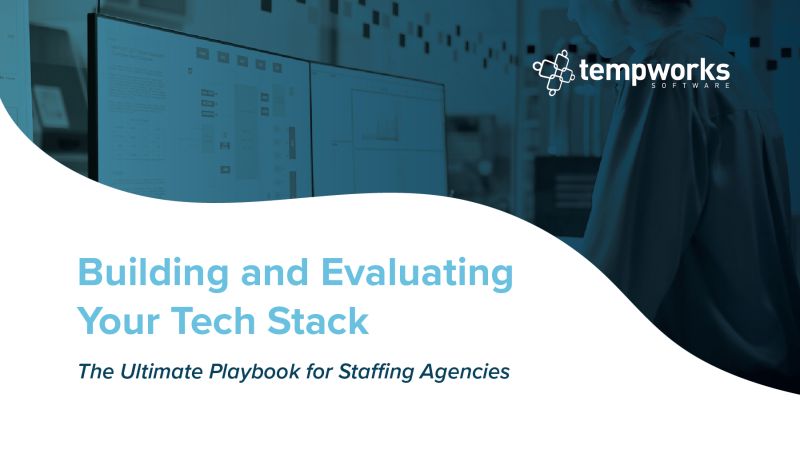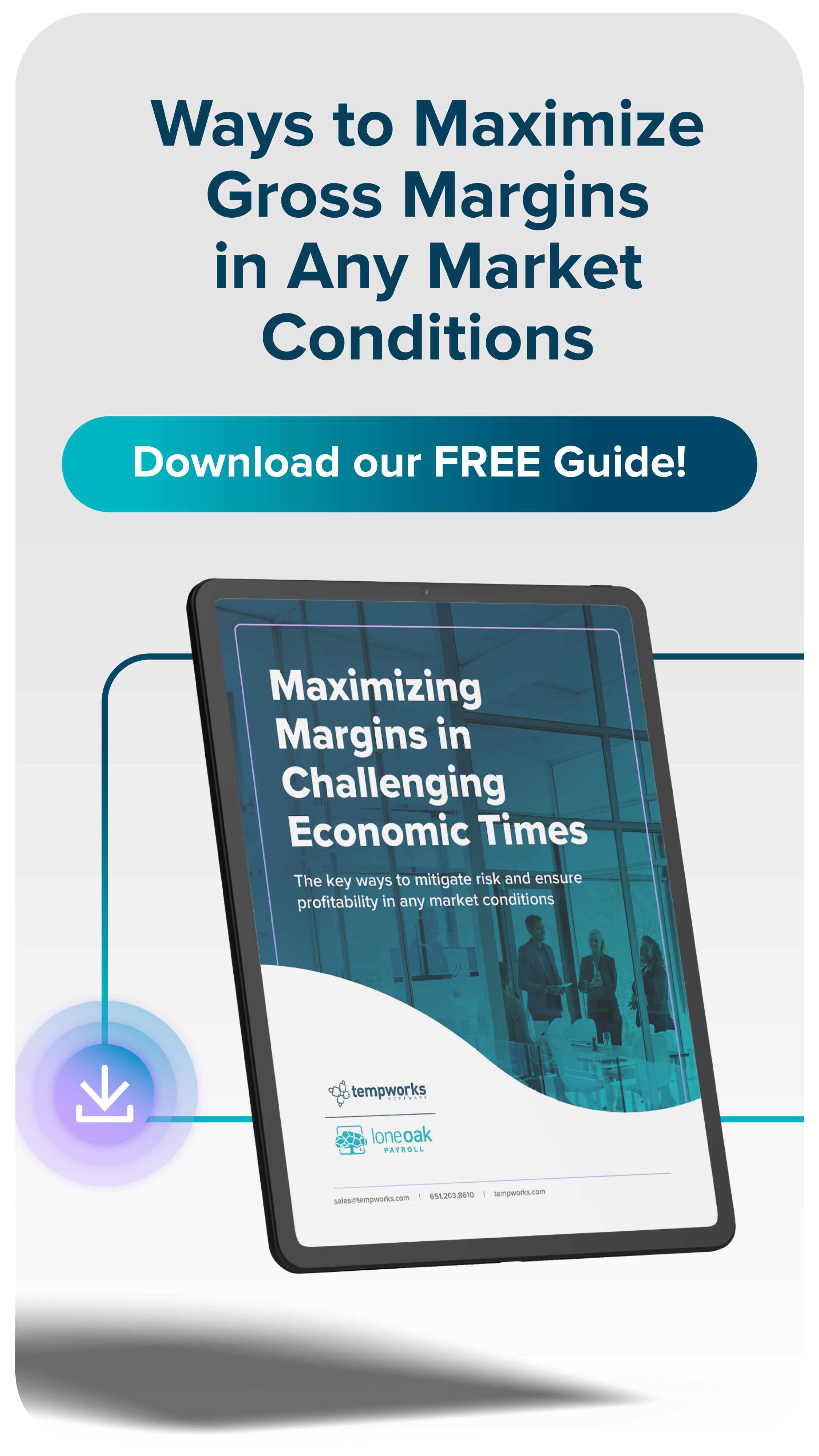In today’s staffing landscape, firms are fighting with razor-thin margins and need to use every tool at their disposal to maximize their chance at profitability. There are a number of strategies throughout the client lifecycle that can help in that process (which we have covered in previous blogs here and here), but one crucial move is leveraging your staffing agency software stack to its fullest. When used properly, staffing technology platforms can streamline operations, reduce overhead, and boost profitability every step of the way.
Yet too often, staffing firms underutilize their technology investments.
As a technology provider, we’ve seen firsthand how companies underutilize the capabilities of their tech stack. Due to a host of reasons from platform complexity to a lack of right-sized investments, companies are estimated to only use 30-50% of the software for which they’re paying. This underutilization leads agencies to continue to add platforms, purchasing new software to solve individual problems without assessing the performance or overlap of their existing systems; this leads to inefficiencies, data silos, and missed opportunities.
Let’s discuss ways to optimize your staffing technology and maximize returns, starting with assessing the tools you already have.
How to Audit Your Existing Staffing Agency Software Stack
Before investing in new tools, conduct a full inventory of your current systems—CRMs, recruiting software, performance dashboards, payroll and billing platforms, and more. Document every license, subscription, and internal tool in use.
Then, run a SWOT analysis on your current technology:
- Strengths: Which tools are heavily used and positively impact efficiency? These often integrate well with other systems or offer strong support.
- Weaknesses: Are there redundant platforms? Outdated systems? High costs with minimal usage?
- Opportunities: Where can automation reduce manual effort? Could moving to cloud-native platforms cut infrastructure costs?
- Threats: Consider security vulnerabilities, vendor reliability, and compliance risks. These considerations are especially important in more heavily regulated industries.
As you’re going through the audit process, remember to include cross-functional stakeholders every step of the way. Often, the tools with the most utility are used across departments, so getting a full picture of a platform’s capabilities and usefulness is crucial.
Aligning Your Tools to Business Goals
Once you understand your current setup, the next step is to define your strategic goals. Are you looking to reduce cost per placement, improve gross margin percentage, or streamline payroll processes? Every tool in your tech stack should directly support these objectives.
Avoid chasing shiny new features. Instead, focus on integrations and platforms that work together seamlessly. Incompatible systems that don’t share data can create operational bottlenecks and undermine your efforts to improve performance.
Tech Stack Optimization Across the Client Lifecycle
At every step of the process, there are tools you should be using to make informed, data-driven decisions. Here is just a sampling of some of the tools at your disposal that you should be integrating into your operations.
Pre-Engagement Tools
- AI and Automation Tools: Used across the tech stack and at various points in the client journey, AI and automation tools for staffing can be deployed to streamline manual processes, increase talent touchpoints, and present a more polished brand in the marketplace.
- Data and Analytics Tools: Forecast hiring trends and proactively adjust recruiting strategies based on real-time industry performance.
- Gross Profit Calculators (GPC): Evaluate whether a potential client will be profitable based on bill rates, burdens and a host of other factors. TempWorks software has a GPC built into our platform, and it’s a service we’ve made available to everybody here.
Tech for During Client Engagement
- Self-Service Portals and Chatbots: These tools reduce manual administrative tasks and give clients the tools to manage documents, review invoices, and interact with your agency on their own schedule. While these tools have major utility, it’s also important to back them with real human support for complex issues or escalations.
- Performance Tracking Software: Monitor key metrics such as profitability and margin, win rate, placement rate, fill rate, redeployment rate, retention rate, client satisfaction, and more. Tools that generate automated, actionable reports help identify high-ROI clients and areas needing improvement.
- Automated Payroll and Billing: Payroll errors cost agencies thousands of dollars each year and hours of manpower. Automated systems not only improve accuracy but also save time and reduce compliance risks.
Why An Integrated System Matters
One of the pitfalls of a staffing agency software stack is data silos. When one platform doesn’t communicate with another, it can lead to blind spots in vital insights and missed opportunities. Integrations between platforms are critical for providing a holistic view of operations, from pipeline to placement to payment. When data flows freely between tools, your team can make faster, smarter decisions that directly impact your gross margin.
It may make sense to consider an all-in-one platform that is purpose-built for staffing. Centralized data, simplified reporting, and fewer logins can lead to both cost savings and higher productivity.
For more information on ways to optimize your business to protect your agency’s profitability, download our guide, Maximizing Margins in Challenging Economic Times.




















